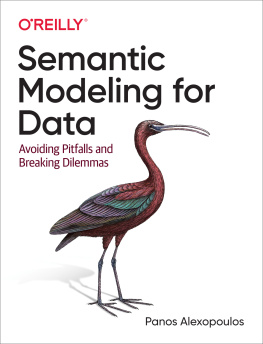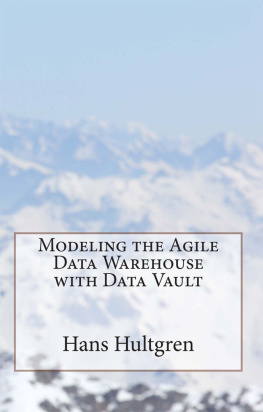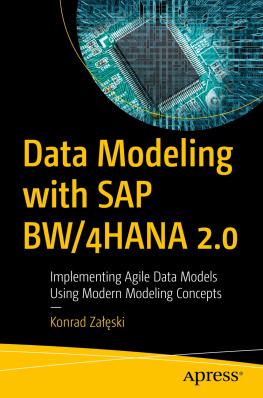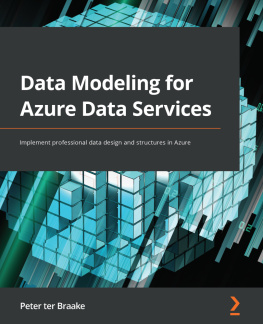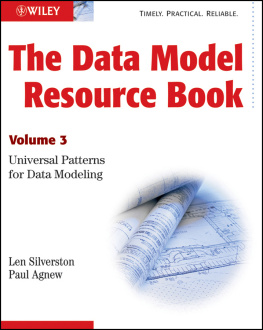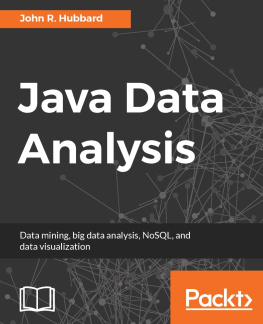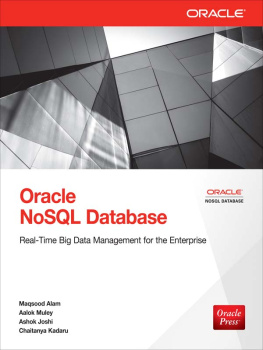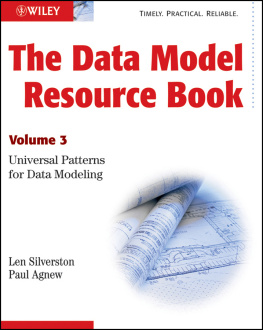
Bringing Together
Data, Semantics, and Software
first edition
Ted Hills
Published by:

2 Lindsley Road
Basking Ridge, NJ 07920 USA
https://www.TechnicsPub.com
Cover design by John Fiorentino
Technical reviews by Laurel Shifrin, Dave Wells, and Steve Hoberman
All rights reserved. No part of this book may be reproduced or transmitted in any form or by any means, electronic or mechanical, including photocopying, recording or by any information storage and retrieval system, without written permission from the publisher, except for the inclusion of brief quotations in a review.
The author and publisher have taken care in the preparation of this book, but make no expressed or implied warranty of any kind and assume no responsibility for errors or omissions. No liability is assumed for incidental or consequential damages in connection with or arising out of the use of the information or programs contained herein.
All trade and product names are trademarks, registered trademarks, or service marks of their respective companies, and are the property of their respective holders and should be treated as such.
Copyright 2016 by Theodore S. Hills, thills@acm.org
ISBN, print ed. 9781634621090
ISBN, Kindle ed. 9781634621106
ISBN, ePub ed. 9781634621113
ISBN, PDF ed. 9781634621120
First Printing 2016
Library of Congress Control Number: 2016930173
To my wife Daphne Woods, who
has always believed in me, and
gave me the space and support
I needed to write this book.

| Contents at a Glance |

| Table of Contents |

| Acknowledgements |
I am very grateful to Tony Shaw of Dataversity for giving me the opportunity to present this new modeling notation to a wider audience, first at the NoSQL Now! conference in San Jose in 2015, and then at the Enterprise Data World conference in San Diego in 2016. Daniel Upton attended my workshop at the NoSQL Now! conference, and introduced me to Steve Hoberman, data modeling enthusiast, leading author, and publisher. I met with Steve to talk about my ideas. Steve accepted my proposal for this book, and that is how it came into being.
The fundamental ideas behind concept and object modeling notation arose from my work on object-oriented programming language design, and from tackling the difficult problem of integrating objects and data. In the latter effort, I was helped tremendously by the many writings of C. J. Date, most especially Foundations for Future Database Systems: The Third Manifesto, Second Edition (by C. J. Date and Hugh Darwen). I had the opportunity to correspond with and speak to Mr. Date about this topic, and this finally enabled me to perceive the difference between data and objects. Mr. Date is not aware of the debt I owe him for the clarity of his thinking on all things relational. One should not read this acknowledgement as his endorsement of my ideas.
I have had the opportunity to discuss the Concept and Object Modeling Notation (COMN), and the ideas behind it, with colleagues at LexisNexis, most notably Roger Cass, Matthew Johnson, Michael Khatib, and Paul Rogers. They gave me the opportunity to test my ideas and my expression of them. Roger has the additional distinctions of having introduced me to Object Role Modeling, and of having put the N in COMN so that the acronym became pronounceable as common. My immediate manager and longtime friend Greg Saxton and our chief architect Ian Koenig encouraged me to pursue this work.
My wife Daphne Woods, a brilliant novelist, long ago trained this technologist in the mysteries of English grammar and composition. She also trained our daughter Heather through ten years of home schooling to near perfection in these fields. Consulting with these two during the writing of this book helped me with clarity and structure.
It was wonderful to have my colleague Laurel Shifrin, respected educator Dave Wells, and Steve Hoberman as technical reviewers. Laurels knowledge of unstructured data and Daves knowledge of structured data helped keep some unsupported assumptions out of the work. Daves early enthusiasm for COMN has been a tremendous boost. What a pleasure to have Steve, a leading author of data modeling books and my publisher, encouraging and promoting this work.
Heres to all who have struggled to tame their data. I hope you find this makes the journey more pleasurable and more successful.

| Introduction |
S am came barreling into the plant managers office, clutching a roll of blueprints in one hand. He was so excited. Joe, have I got great news! he called out.
Joe looked up from his desk behind the office counter. He looked weary. Well, keeping track of everything that goes on in a 150-acre refinery that processes 200,000 barrels of oil a day could make anyone weary. He pushed back his chair, got up, and ambled over to the counter.
Whats the news? Joe asked.
The boys in engineering have figured out that, by just combining a few material flows earlier in the process, the petrochemical plant could reduce emissions, produce more product from the same input flows, and add $5,000 a day to the plants bottom line in reduced expenses! So Ive come down here to find out what it will take to implement these changes. Joe placed the rolled-up blueprints on the counter and spread them out.
Sam started studying the drawings, running his finger over the many lines and shapes that represented the thousands of pipes visible out the office windows. He licked his finger and pulled the top drawing back to look at the next blueprint, and then the next, all while Joe watched excitedly but silently. Sam had a reputation. He knew his stuff. If Sam said it could be done, it could be done, and if he said it couldnt, well, youd better do a ton of research before you said Sam was wrong.
Finally Sam looked up from the counter. I think I get it. This isnt too bad. Well just have to re-route a few pipes and this could be implemented pretty easily.
Joe was happy and relieved. So, how long do you think it will take?
Sam kept his look level when he delivered the blow. I think about six months.
Six months! Joe nearly shouted. I thought you said this was easy! Why, in six months we will have lostJoe figured fast in his headnearly a million dollars in savings!

I know, but it cant be helped, Sam explained. You see, although the change is easy, we have to be really careful we dont mess up any downstream product flows that could be inadvertently affected by this change. And that takes time to figure out.


